- Home
- Robert Goddard
The Fine Art of Invisible Detection
The Fine Art of Invisible Detection Read online
Robert Goddard
* * *
THE FINE ART OF INVISIBLE DETECTION
CONTENTS
ONE
TWO
THREE
FOUR
FIVE
SIX
SEVEN
EIGHT
NINE
TEN
ELEVEN
TWELVE
THIRTEEN
FOURTEEN
FIFTEEN
SIXTEEN
SEVENTEEN
EIGHTEEN
NINETEEN
TWENTY
TWENTY-ONE
TWENTY-TWO
TWENTY-THREE
TWENTY-FOUR
TWENTY-FIVE
TWENTY-SIX
TWENTY-SEVEN
TWENTY-EIGHT
TWENTY-NINE
THIRTY
RE-EMERGENCE
ABOUT THE AUTHOR
Robert Goddard’s first novel, Past Caring, was an instant best-seller. Since then, his books have captivated readers worldwide with their edge-of-the-seat pace and their labyrinthine plotting. He has won awards in the UK, the US and across Europe, and his books have been translated into over thirty languages. In 2019 he won the Crime Writers’ Association’s highest accolade, the Diamond Dagger, for a lifetime achievement in Crime Writing.
Also by Robert Goddard
Past Caring
In Pale Battalions
Painting the Darkness
Into the Blue
Take No Farewell
Hand in Glove
Closed Circle
Borrowed Time
Out of the Sun
Beyond Recall
Caught in the Light
Set in Stone
Sea Change
Dying to Tell
Days without Number
Play to the End
Sight Unseen
Never Go Back
Name to a Face
Found Wanting
Long Time Coming
Blood Count
Fault Line
Panic Room
One False Move
The Wide World trilogy
The Ways of the World
The Corners of the Globe
The Ends of the Earth
For my mother-in-law, Thelma North
ONE
UMIKO WADA WASN’T a private detective. she just worked for one. She answered his phone, managed his accounts, kept his records, talked through problems with him, greeted his visitors, fetched him bento-boxed lunches and made him tea, which he’d taken to drinking virtually all day now he’d supposedly given up smoking.
The sign on the door of the seventh-floor office in the Nihonbashi district of Tokyo where Wada spent her working days described it as the premises of the Kodaka Detective Agency. But there was only one detective in the agency: fifty-eight-year-old Kazuto Kodaka. There’d been several detectives, apparently, when Kodaka senior was in charge. But his son preferred to operate alone. What would happen if and when his body collapsed under the strain of his unhealthy habits and chronic overwork was easy to predict. Wada would need a new job. Which wasn’t a happy thought. She liked this job. It suited her.
She always thought of herself as Wada rather than Umiko because that was how Kodaka referred to her. It had seemed disrespectful at first. Now she was rather fond of it. It reinforced an image of herself she’d honed over years of being alone. Simple, strong, independent. That was Wada. Umiko was a girl she’d once been. The Wada she’d become was nearly forty-seven, though she looked younger, probably because, as her mother regularly reminded her, she’d never had children to raise and worry over.
That wasn’t Wada’s fault, as her mother used to acknowledge but now seemed inclined to forget. She was a widow. Her husband Tomohiko – Hiko, as she’d called him and still did, in the privacy of her own thoughts – had been killed in the sarin gas attack on the Tokyo subway back in 1995, though technically he hadn’t actually died until twelve years later. The decade and a bit he’d spent in a coma froze Wada’s life. Her mother had still hoped, when he finally expired, that Wada would find somebody else to marry. But it had never happened.
Sometimes, though she’d never have admitted it to anyone, she was glad she hadn’t gone on in the world with Hiko, bearing his children, keeping house for him, cooking, cleaning, deferring, conforming. She was as sorry as anyone could be that he’d died as he had. There was a time when she’d been sorry on the same account for herself. But that time had passed. That was why she’d finally dropped his surname and gone back to the one she was born with: Wada.
She’d met Kodaka because of the sarin attack. He was gathering evidence to use against members of Aum Shinrikyo, the murderous cult responsible, on behalf of relatives of other victims and wanted to know if Hiko had said anything to her, before lapsing into his coma, about Yozo Sasada, the cult member who’d released the gas in the train carriage Hiko had been travelling in that fateful spring morning in 1995. No, was the answer. Hiko was already unconscious when she’d reached the hospital. He’d said nothing. To her or anyone else.
She was working as an English translator when Kodaka first contacted her, earning money the only way she knew how. She enjoyed speaking and reading English. It took her to a mental space half removed from the Japanese world she didn’t quite have a firm stake in any more. She felt freer there, better able to be herself.
It was a surprise when Kodaka contacted her again a few months later, this time inviting her to apply for a job as his secretary. Her fluency in English was something he reckoned would be valuable in dealing with foreign clients. Not that he actually had any foreign clients. But he was optimistic about expanding the reach of his operations and there were quite a few occasions when an improvement on his halting grasp of the international language was called for.
She took the job, which she described as personal assistant rather than secretary. It often involved working late or at the weekend for no extra pay, but she didn’t mind and Kodaka rewarded her with occasional bonuses when business was good.
The business itself was biased towards commercial matters. There was a lot of vetting of potential recruits for companies or identifying which of their employees might be responsible for leaking sensitive information to competitors or the media or the tax authorities. Kodaka senior had sited the agency within easy reach of the Tokyo Stock Exchange to attract such business. Divorce and missing persons, the other staples of the profession, were less significant at the Kodaka Agency, though Wada enjoyed them when they came along. She found the tangled problems of other people’s lives grimly fascinating.
Most of the time, her involvement with those lives was confined to putting Kodaka’s notes and other records in order and compiling reports to lawyers, which she was much better and quicker at than Kodaka himself, whose talents lay in ferreting out information, staking out addresses and piecing together evidence. More than once, after pulling his bottle of Suntory whisky out of the bottom drawer of the scratched green filing cabinet behind his desk and pouring them both a glass as the lights of the city danced in the night beyond the office windows, he’d say they made a good team.
Sometimes, very rarely, Kodaka asked her to go out into the field and follow someone. This occurred when only a female tail was likely to escape detection. She proved to be rather good at it. Without intending any insult, Kodaka said she had the gift of being invisible. No one noticed her. She was anonymous. She attracted no attention.
Kodaka was unmarried. Wada’s mother had suggested, in her desperation for a grandchild that only grew as her daughter progressed into her forties, that he might be a suitable husband, even t
hough she’d never actually met the man. The idea was absurd. Kodaka found all the female company he desired in his late-night forays to assorted bars and clubs. He often arrived at the office in the morning with the rumpled, unshaven, red-eyed look of someone who’d barely slept, let alone in his own bed. He’d never made any kind of overture to her, probably because he valued her services too highly to risk losing them. He was right. The overtures wouldn’t have been well received. That would have been unfortunate. Because they were a good team.
Yozo Sasada, the Aum Shinrikyo member responsible for Hiko’s death, had finally been executed twenty-three years after the attack, along with the cult’s founder, Shoko Asahara, and twelve others. Kodaka made no reference to their hangings, though when the day came Asahara’s blank, heavy-lidded face was all over the newspapers and the giant TV screens that Wada passed on her way to work. She interpreted her employer’s silence on the subject as an example of his sensitivity, which as ever could only be detected by what he didn’t say rather than what he did.
The twenty-fourth anniversary of the attack had passed now as well, again unremarked upon in the offices of the Kodaka Detective Agency. Spring was advancing. Cherry blossom viewing spots in Kitanomaru Park were hard to come by. The world went on its way. It was business as usual.
Until it wasn’t.
Wada made most of Kodaka’s appointments for him. Most of his office appointments, anyway. He fixed personal rendezvous for himself. An unenthusiastic convert to modern technology, he recorded these in an old-style pocket diary and insisted Wada keep a paper diary for the office as well. He made occasional joking references to his reluctance to embrace paperless procedures, though Wada suspected he was also worried about the security of information committed to the virtual world. And there was no doubt many of his clients valued security so highly that his old-fashioned methods appealed to them.
That Friday, when Wada reached the office, she was mildly surprised to see an afternoon appointment with someone identified only by the hiragana み and た written in the diary in Kodaka’s inelegant hand. It must have been made after she’d left the previous evening. She mentioned it to him when he arrived. He was looking far from spruce but by no means unusually dishevelled. All she learnt from him was that み た was one Mimori Takenaga, her name recorded in traditional albeit abbreviated style with the surname first and the forename second.
‘She caught me on the telephone just before I left last night,’ Kodaka explained.
‘Husband trouble?’ Wada enquired.
‘Not the way you mean.’
And that was that. He didn’t elaborate. And Wada didn’t press him to. That was one of the things that made them a good team.
Mimori Takenaga arrived promptly at four thirty. She was a woman of about Wada’s own age, but smaller and more delicately built. She would have looked perfect in a kimono, whereas Wada, on those ever rarer occasions when she wore one, felt lumpy and awkward. In the fashionable western clothes she was actually wearing, Mrs Takenaga looked smart and affluent but somehow ill at ease. There was an impression of someone playing a part she wasn’t suited to, which the large, well-filled Mitsukoshi carrier bag she left in the waiting area failed to dispel.
She was closeted with Kodaka for about an hour, their voices reaching Wada as an indistinct murmur often drowned out by the telephone or traffic noise from the street below. The length of the consultation suggested the matter was both delicate and complicated. Kodaka asked for tea halfway through and Wada only caught a brief snatch of the conversation as she delivered it. Her curiosity was aroused, but she had no difficulty hiding it. Hiding her feelings came easily to her.
Eventually, Kodaka showed his new client out. Mrs Takenaga cast Wada a long frowning glance as she collected her Mitsukoshi carrier bag along with her umbrella. It was faintly disquieting. Wada could think of nothing she had done to merit such attention.
It had started to rain during the hour Mrs Takenaga had spent with Kodaka. The sky was unnaturally dark for the time of day and the rain, coursing down the window, appeared from Wada’s place behind her desk to be coursing down Kodaka’s forehead and cheeks as well as he stood close to the glass, gazing down, waiting, it was soon apparent, to see his visitor emerge on to the street.
‘Hasui could have painted this,’ he said at length, just as watery sunlight began to wash over his face. His interest in art, whenever it revealed itself, always came as a slight surprise to Wada. She was fond of Hasui’s work herself, though she’d never mentioned this to Kodaka. ‘He might have called it Spring rain in Nihonbashi. Takenaga-san has a traditional umbrella. Did you notice? Dark red.’
‘Maroon.’
Kodaka smiled. ‘Why do problems always seem simpler when I discuss them with you? I wonder. Perhaps your precision is the reason.’ He turned towards her. ‘Please lock the outer door and come into my office. Oh, and more tea would be welcome.’
The play of cloud and low sun was casting eerie variations of light across the walls of Kodaka’s office when Wada delivered the tea and sat down, facing him across his desk. The green-shaded lamp wasn’t on. Shadows were being given free rein, as Kodaka often seemed to prefer. There was cigarette smoke in the air, adding its own layer of haze to the atmosphere.
‘Takenaga-san asked if she could smoke,’ Kodaka said with an apologetic shrug. ‘She was a little … nervous.’
Kodaka looked a little nervous himself, which was unlike him. But it was clear to Wada that he wanted to tell her why Mrs Takenaga had come to him. ‘What is the nature of the case?’ she enquired gently.
‘The nature of the case?’ Kodaka frowned pensively and took a sip of tea. ‘Certainly this is not a normal problem. It is … complicated. And not just because of Takenaga-san’s position. I will explain. Takenaga-san’s father, Shitaro Masafumi, died when she was five. He committed suicide. Officially. She has never believed that. She believes he was murdered.’
‘With good reason?’
Kodaka sucked his teeth. ‘Hard to say. Masafumi died in Showa fifty-two.’ 1977, fifty-second year of the Showa era, was more than forty years ago. Wada realized at once that the statute of limitations ruled out challenging a suicide verdict at such a distance in time.
‘Too long ago for criminal or civil redress,’ she remarked simply.
Kodaka nodded. ‘Takenaga-san wants to know the truth, though. What she will do with the truth … I do not know. I am not sure she knows.’
‘Can you get it for her?’
‘Maybe it is already known. Masafumi was not a respectable man. He lived expensively, but the source of his income was unclear. He was suspected by the police of having sokaiya connections.’
Wada didn’t need to be told anything about sokaiya. They were criminals who traded in commercial secrets, threatening to reveal damaging information, often at a company’s AGM, unless they were paid off. Some had yakuza affiliations, some not. Kodaka had often been employed by companies to neutralize sokaiya threats.
‘To escape arrest, which he is thought to have believed was imminent, Masafumi left the country, supposedly on holiday. He joined a tour party visiting Europe. Other members of the group described him as … distracted. He made many telephone calls and often sent telex messages from the hotels they stayed in. He looked worried all the time. He chain-smoked. He did not join in light conversation. They went first to Rome, then Paris, then London. While they were in London, Masafumi hired an English student who spoke good Japanese to act as his translator. He knew very little English himself, it seems. The translator was seen with him a lot. Sometimes they were in telephone boxes together, with the translator talking on the telephone while Masafumi stood beside him. Suspicious behaviour, certainly. The translator said he was “helping Masafumi-san do business”.’
‘What kind of business?’
‘Unknown. But probably not legal. We can guess Masafumi was trying to raise money to get himself out of trouble. The translator could tell us. But he disappeared stra
ight after Masafumi’s death.’
‘That is also suspicious.’
Kodaka nodded. ‘I agree.’
‘How did Masafumi die?’
‘He used a plastic laundry bag in his hotel room to suffocate himself. Or …’
‘Someone else used it to suffocate him.’
‘Takenaga-san believes the translator killed him. Or knows who killed him. That was also her late mother’s belief. Other members of the family believe he killed himself because he knew he would go to prison if he came home and may have wished to avoid bringing shame on them.’
‘What do we know about the translator?’
‘Very little. His name: Peter Evans. Estimated age: mid-twenties. A student, perhaps. Never traced. There was also a photograph.’
‘Of Evans?’
‘Of the tour party, standing in a group near St Paul’s Cathedral. Masafumi was in the back row, with Evans standing beside him. But Evans moved just as the photograph was taken, so he was … blurred.’
‘Takenaga-san showed you the photograph?’
‘No. She no longer has it. It was sent to her mother by the member of the party who took it after they returned to Japan. It was later destroyed by Takenaga-san’s uncle because …’ Kodaka paused to assemble his thoughts, then continued. ‘Her mother gave her the photograph shortly before her death from cancer twenty-seven years ago. After her death, Takenaga-san, who was still unmarried then, arranged for a cropped portion of the photograph, with only Evans in it, to be printed in the personal advertisements page of the London evening newspaper, offering a reward of one thousand pounds to anyone who could identify him. The notice stated that this person had worked for her father in London in late August and early September of 1977. Anyone who could identify him was asked to write to her. This outraged her uncle, who was at that time supporting her financially and considered the matter of her father’s death, his brother, best forgotten. So, he destroyed the photograph and forbade her to reply to any letters she received.’

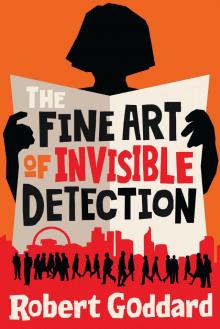 The Fine Art of Invisible Detection
The Fine Art of Invisible Detection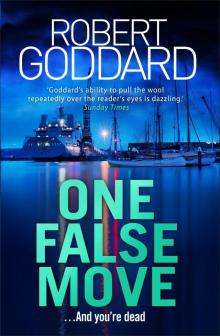 One False Move
One False Move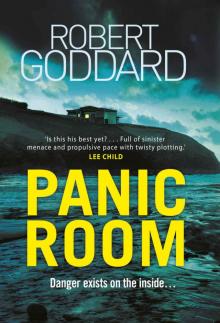 Panic Room
Panic Room Beyond Recall
Beyond Recall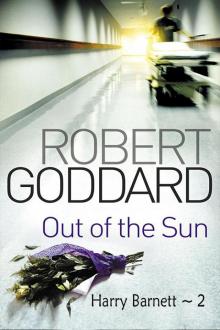 Out of the Sun
Out of the Sun In Pale Battalions - Retail
In Pale Battalions - Retail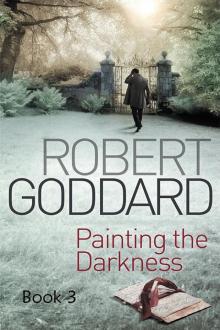 Painting The Darkness - Retail
Painting The Darkness - Retail The Corners of the Globe
The Corners of the Globe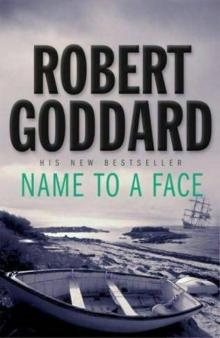 Name To a Face
Name To a Face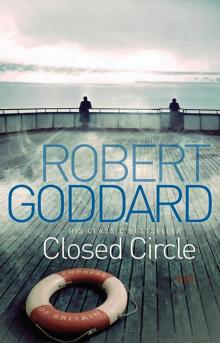 Closed Circle
Closed Circle Caught In the Light
Caught In the Light Into the Blue
Into the Blue Past Caring - Retail
Past Caring - Retail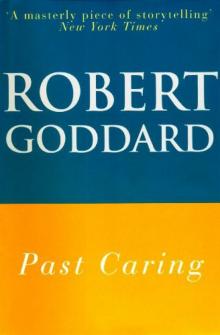 Past Caring
Past Caring Hand In Glove - Retail
Hand In Glove - Retail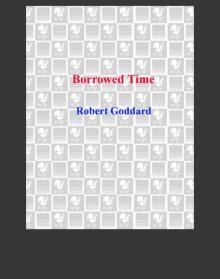 Borrowed Time
Borrowed Time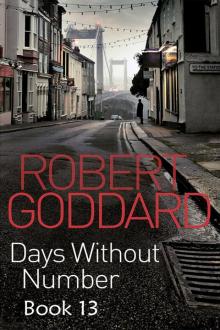 Days Without Number
Days Without Number James Maxted 03 The Ends of the Earth
James Maxted 03 The Ends of the Earth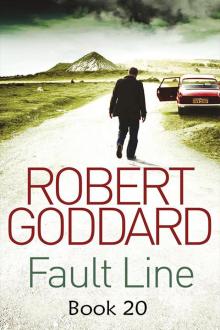 Fault Line - Retail
Fault Line - Retail Play to the End
Play to the End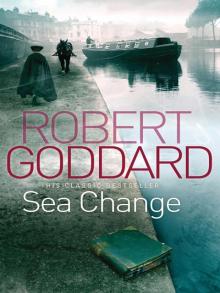 Sea Change
Sea Change Never Go Back
Never Go Back Take No Farewell - Retail
Take No Farewell - Retail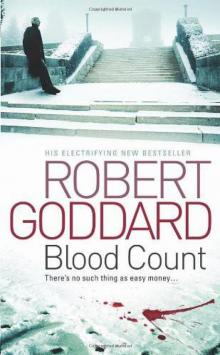 Blood Count
Blood Count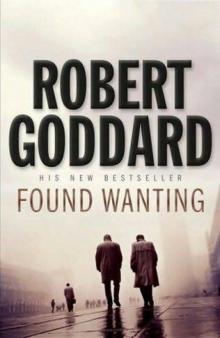 Found Wanting
Found Wanting Sight Unseen
Sight Unseen Hand in Glove
Hand in Glove The Ways of the World
The Ways of the World